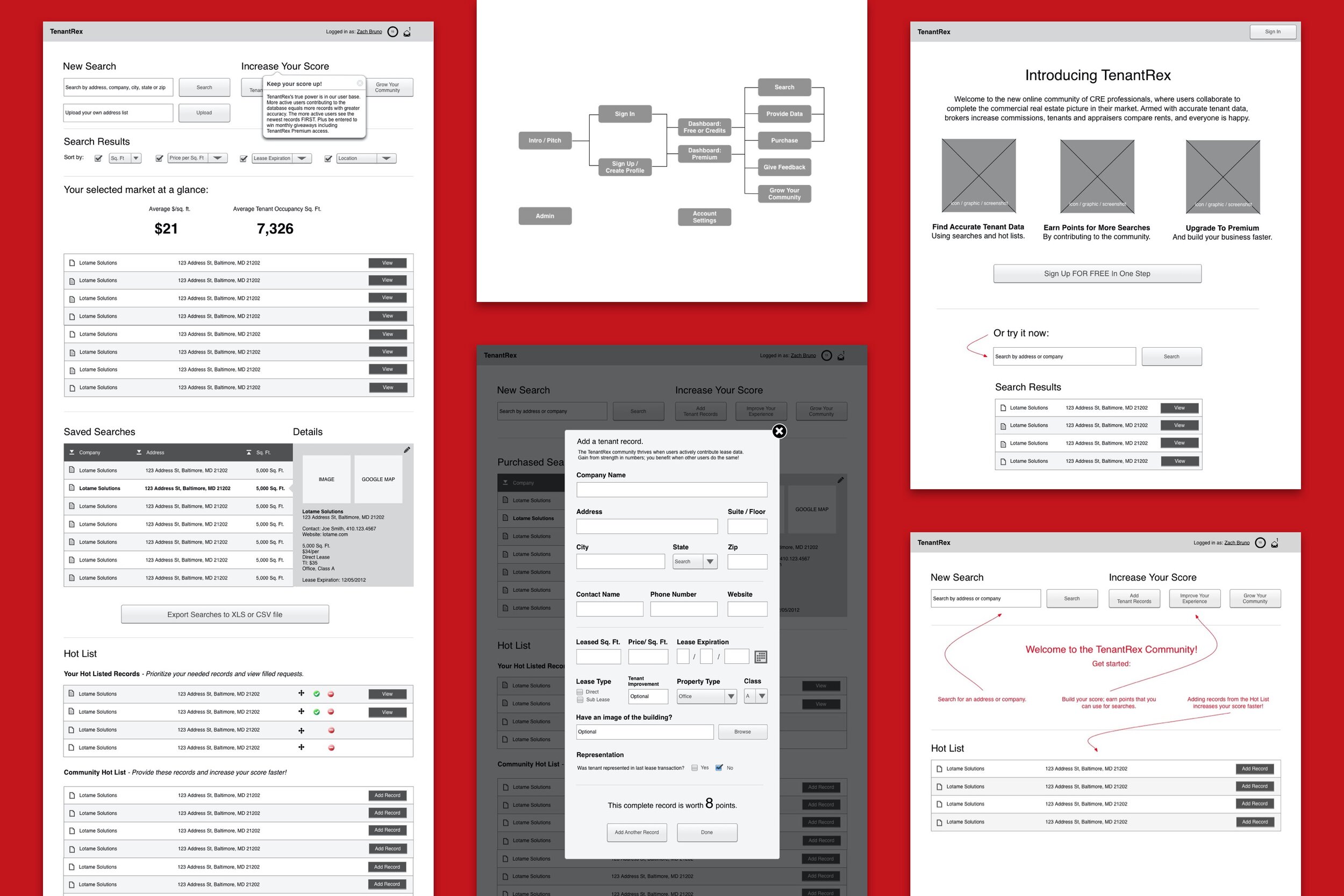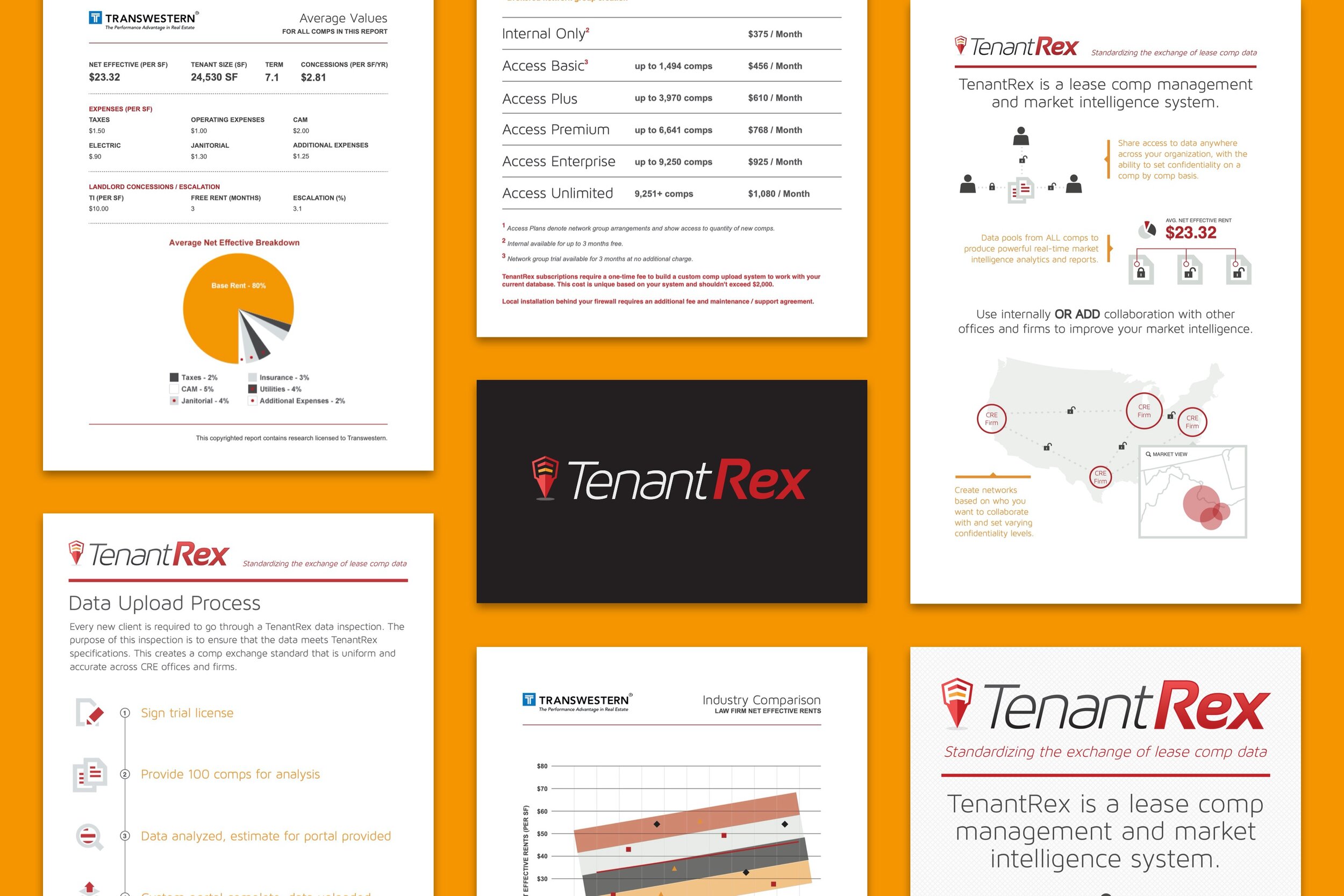
Insight
Commercial Real Estate brokers rely on accurate and up-to-date lease data in order to get the best deals for both tenants and landlords. However, people who have the data are incentivized to keep it private, even though greater transparency would actually benefit everyone and their bottom line.

IDEA
Allow CRE professionals to anonymously and securely exchange standardized lease comp data.

TIMELINE April 2011 – June 2012
TEAM CEO, Investor/Partner, A team of developers (Lead developer became a partner as well)
While I was running my creative shop, wndr, a good friend introduced me to an entrepreneurial commercial real estate broker. He had a very interesting, but solvable problem, so the 3 of us eventually went into partnership launching a startup.
The friend that introduced us was the former President & CEO of World Relief. He invested the seed money for our MVP and was a hands-on business partner. The broker was the CEO, and I was the Creative Director. I was responsible for everything related to brand, marketing, and product.
Our original idea was to build a system that merged the Commercial Real Estate industry-standard CoStar data with that from other sources. We looked at various information APIs from Dunn & Bradstreet, Hoovers, etc.
However, our research revealed that it would have been cost prohibitive, and probably still not very accurate. We also knew we didn’t want a business model that was reliant on someone else’s data flow.
At that time, I was an avid user of Glassdoor, which had that great give-to-get business model that I thought would work perfectly here.

Being the small team that we were, we had to do our research as efficiently as possible, and so surveys and email campaigns were really the tool of choice. We actually hand-built a list of thousands of real estate brokers that we would leverage to gain insight about what kind of tool they wanted to use.
Once we had an idea of what we were building, we set out to create our MVP.
We imagined a platform where, brokers, researchers, or entire firms could upload their data in exchange for points. The points could then be used to view lease comps that you might need, but don’t have.
Standardization, speed, and security were of major importance, as was anonymity, because many lease deals include non-disclosure agreements, from either the landlord or the tenant.
When it came time to apply visual design, I did so knowing that the CRE industry at large is historically a late adopter. A lot of brokers have been doing this a long time, and are pretty old school.
So I really had to remember that I was designing FOR disruption.
The content on the platform is very data heavy. There wasn’t always a lot that we could just cut out, so I really had to leverage layout, type scale and color as my main tools to get good information hierarchy. Wherever I could, I opted for simplicity and focus, but make it easy to find everything a user might need.
Another important thing that I kept in mind was that potential users would likely be discovering the product at the same time they were discovering the brand. So the platform itself was the primary vehicle to convey the desired brand attributes.
One way we leaned into this was by creating a value-add calculator that allowed us to show, in real dollars, what potential impact our software could have on a prospect’s brokerage business. We used this on our roadshows as well as in email blasts. I really wanted potential customers to know that by using our platform, they could be a more effective, and therefore successful, broker.

What We Learned
Instead of an MVP, we built a large, feature-rich platform, that few were ready to use.
We made too many assumptions, and surveys aren’t always the most accurate research tool.
Because we were building a solution to my partner’s specific problem, our research might have subconsciously validated assumptions rather than revealing unique insights.
Mobile-first would have been a much more effective approach, but due to its infancy and the slow adopting CRE industry, desktop was our primary viewport.